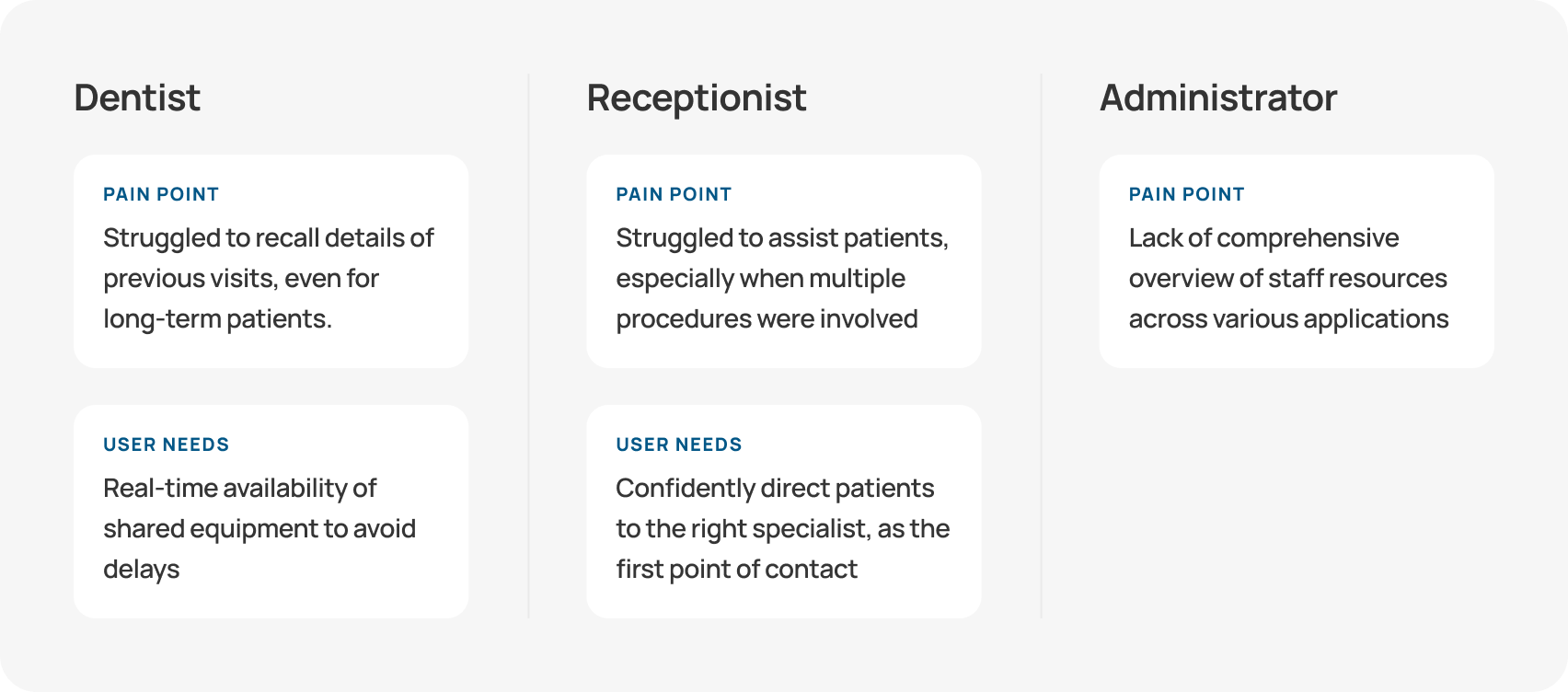Easy Plan
Streamlining dental clinic operations
with all-in-one management solution
Context
Easy Plan was designed to address the complexities of clinic operations, making it easier for dentists to focus on patients, receptionists to manage appointments and administrators to oversee clinic resources. This case study explores my role as the UX/UI Designer for Easy Plan, detailing the process, challenges and outcomes of the project.

My role
As the UX/UI Designer, my primary focus was to ensure that Easy Plan was intuitive and user-friendly for all roles within the clinic. I led the research efforts, transforming user needs into actionable design elements, and continuously iterated on the design based on user feedback.
Research
To overcome the challenge of unfamiliarity with HealthTech, I conducted a series of detailed user journey mappings and collaborated closely with clinic staff to ensure every corner case was addressed, resulting in a more intuitive and effective product.
The research phase began with in-depth user interviews conducted alongside the founder aiming to understand the workflows within a typical dental clinic and find intuitive ways to improve them without requiring extensive staff retraining. These interviews revealed critical pain points which were instrumental in defining the product scope and shaping the user flows.

Design process
After gathering together all the insights, I collaborated with the founder to map out and outline the user flows tailored to each role using FigJam.
Then I transitioned to Figma for high-fidelity wireframing, design and prototyping. Usability principles guided every step, ensuring that the application was not only functional but also easy to use in a busy clinic environment. The design underwent multiple iterations, informed by user testing, to fine-tune the experience.
Validation
User testing revealed the positive impact of the design and also gave us a lot of insights for further development. User satisfaction surveys indicated a 50% increase in ease of use compared to the previous system, and appointment scheduling time was reduced by 40%.

Outcomes
One year post-launch, Easy Plan is now implemented in 5 clinics with a network of branches. These clinics report a 70% average increase in operational performance.
The positive feedback from clinics using Easy Plan underscores its effectiveness. As a patient, I've personally experienced the benefits of seamless coordination among specialists and quick appointment scheduling, which has made my visits stress-free.
Challenges & learnings
Diving into HealthTech as a new domain required a deep understanding of the unique challenges faced by potential users. This involved meticulous attention to corner cases that shaped many updates and flow optimisations.
As someone new to HealthTech, I quickly realised the importance of understanding the specific needs and workflows of dental clinics. This steep learning curve was critical in ensuring that Easy Plan met the real-world demands of its users.
This project was a significant learning experience for me, especially in understanding the nuances of HealthTech. It reinforced the importance of user research and iterative design in creating solutions that truly meet user needs. Moving forward, I am excited to apply these insights to new challenges in my career.